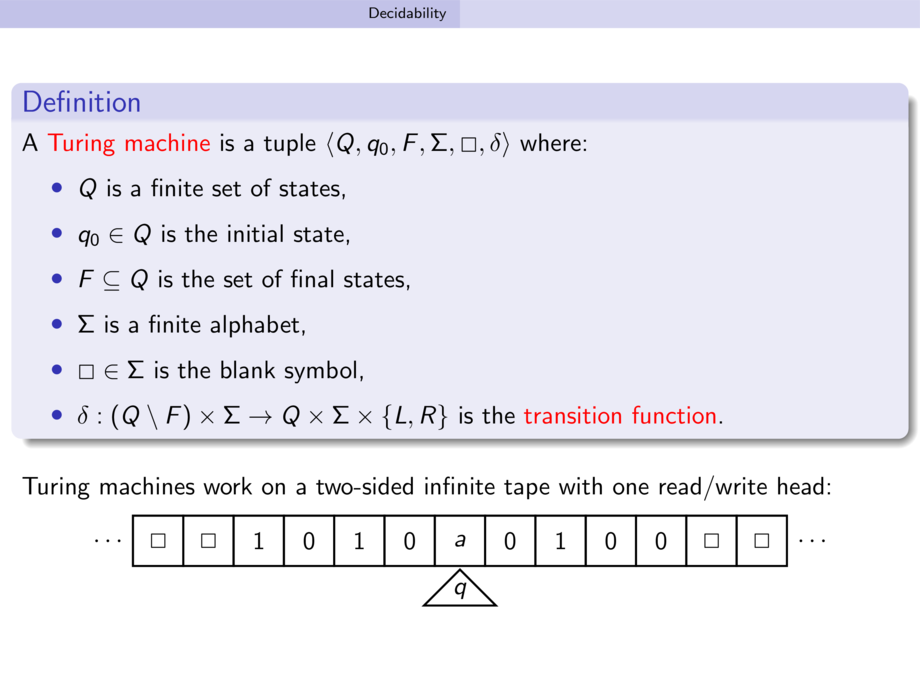



































































































5/40
\begin{frame}
\small
\begin{definition}
A \alert{Turing machine} is a tuple $\langle Q, q_0, F, \Sigma, \Box, \delta \rangle$ where:
\begin{itemize}
\item $Q$ is a finite set of states,
\item $q_0 \in Q$ is the initial state,
\item $F \subseteq Q$ is the set of final states,
\item $\Sigma$ is a finite alphabet,
\item $\Box \in \Sigma$ is the blank symbol,
\item $\delta : (Q \setminus F) \times \Sigma \to Q \times \Sigma \times \{L,R\}$ is the \alert{transition function}.
\end{itemize}
\end{definition}
\medskip\pause
Turing machines work on a two-sided infinite tape with one read/write head:
\turing{\Box,\Box,1,0,1,0,a,0,1,0,0,\Box,\Box}{q}{0}
\end{frame}

